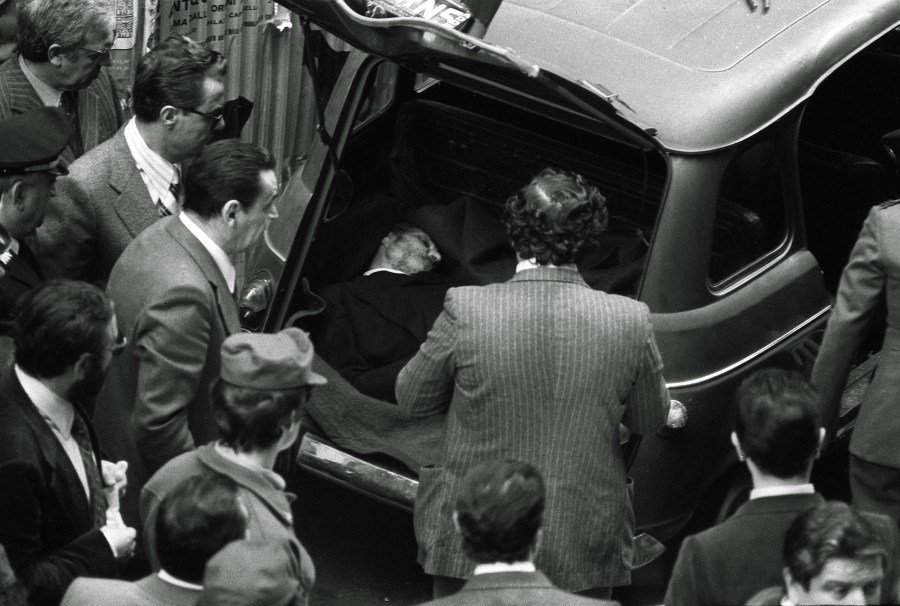
In March 1978, Italy woke to a political nightmare. Aldo Moro — a former prime minister and architect of a fragile coalition — had been kidnapped by the Red Brigades. His five bodyguards were murdered in the street. For 55 days, the Brigades taunted the government with proof-of-life photos. Then came the final blow: Moro’s body was found in a car near the headquarters of his political party, the Christian Democratic Party.
The message was unmistakable — the state could not protect its own.
This was the apex of what is today known as the “Anni di Piombo” — the “Years of Lead.” It was a decade of political terrorism that left hundreds dead and shook Italian democracy to its core. With it came the lesson that when democracies hollow out their defenses against extremism, the consequences can be violent, destabilizing, and hard to reverse.
The Red Brigades emerged in the early 1970s as a fringe revolutionary leftist group bent on overthrowing the state. They robbed banks and sabotaged factories. They targeted judges, journalists, officials, and politicians. What began as sporadic violence became systematic — kidnappings, assassinations, and a disciplined campaign to delegitimize the state.
During the same period, the far right also staged multiple deadly bombings with mass casualties, deepening the sense of siege.
The Italian state was not ready. Police forces were fragmented and under-resourced. Intelligence agencies were disorganized and politicized. Courts lacked the tools to handle complex terrorism cases. Many Italians, weary of corruption and dysfunction, really did doubt the state’s legitimacy — a vacuum the extremists exploited.
Moro’s murder was a turning point. The trauma shocked Italy into overhauling its counterterrorism architecture. Parliament empowered prosecutors to work with pentiti — repentant militants who turned state’s evidence. Specialized police units were created. Intelligence sharing improved. Crucially, civic organizations on the left publicly denounced the terrorists, isolating them socially as well as operationally.
By the late 1980s, the Red Brigades had been dismantled and the violence receded. But the process was slow and scarring — proof that once political violence takes root, it cannot just be willed away. It must be confronted with institutional capacity and societal resolve.
The U.S. is not Italy in the 1970s. Today’s violent actors — particularly on the far right — are less centralized, operating in loose, online networks driven by ideology, grievance, and conspiracy. Far-right extremists have accounted for most ideologically motivated killings in recent years, but analysts also warn of rising activity on parts of the far left: targeted vandalism, assassinations, arsons, and organized assaults on government facilities. The threat is more diffuse, networked, and opportunistic.
Yet instead of strengthening institutions to meet this moment, we are weakening them. Federal reporting and data systems that track extremist violence have been pared back or politicized. Prevention programs that help communities recognize and reduce risk have lost support. Specialized teams have been downsized. Analysts describe shrinking resources and growing caution about naming threats. This may sound bureaucratic, but it isn’t. When institutional muscle memory fades and extremists sense a distracted, divided or timid state, risk grows.
Italy’s recovery offers three lessons. First, capacity matters. Without reliable data, specialized personnel, and clear mandates, agencies miss warning signs and struggle to respond. Second, politicization is dangerous. Partisan interference in threat assessments erodes trust and amplifies extremist narratives. Third, enforcement isn’t enough. Italy succeeded not just through arrests, but also through a broad social consensus that rejected violence and undercut its appeal.
So what should the U.S. do now — before the threat becomes unmanageable? Restore transparency by publicly tracking and releasing data on violent incidents and ideological trends. Insulate threat analysis from political interference and invest in analytic capacity at the FBI and the Departments of Homeland Security and Justice. Expand interagency task forces that connect federal, state, and local actors. Review legal tools — not to create sweeping new surveillance powers, but to ensure prosecutors can address decentralized, ideologically motivated violence. And rebuild prevention programs that help communities identify early warning signs and de‑escalate risk.
These steps aren’t glamorous. They won’t make headlines. But they build the foundation of a resilient democracy. Political violence rarely explodes overnight; it grows when institutions look away, threats are downplayed, and prevention is treated as optional.
Italy learned this the hard way. America doesn’t have to — but if we dismantle the very tools that let us see and stop the threat, we may find ourselves in a moment of crisis, wondering, like Italy once did, how it all spiraled out of control.
Tom Brzozowski is a former Justice Department counsel for domestic terrorism and a global expert in counterterrorism and violent extremism.






